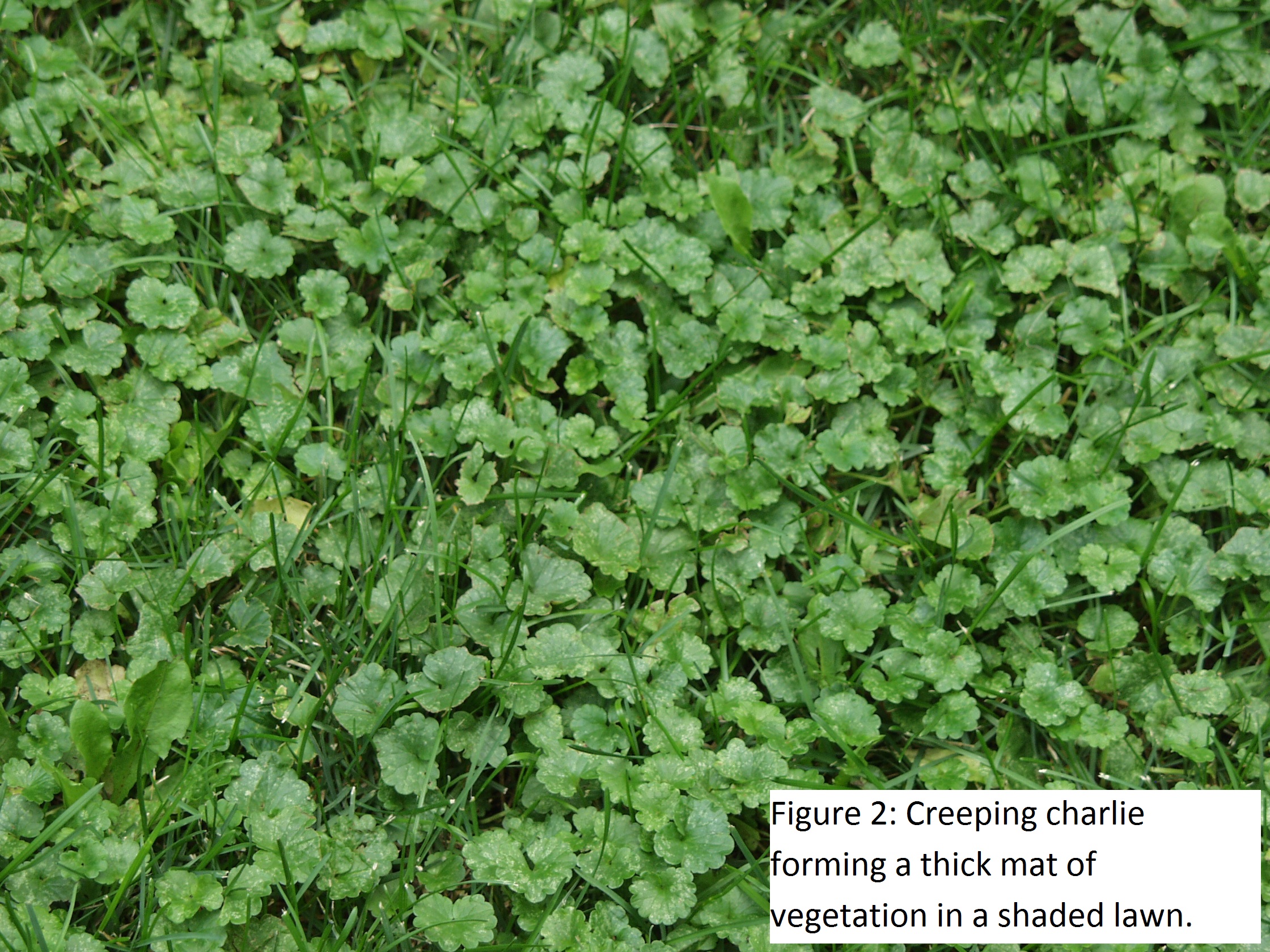You glance out at your garden and notice something’s off. Those lush green carpets of Creeping Charlie are back, spreading faster than you can say “ground ivy.”
If this stubborn plant has invaded your garden, you’re not alone. This uninvited guest is notorious for its relentless growth and ability to overtake your precious plants in the blink of an eye. But don’t worry—you’re about to discover effective ways to stop Creeping Charlie in its tracks.
Imagine reclaiming your garden’s beauty without the constant battle. Ready to learn how to regain control and enjoy a vibrant, Charlie-free garden? Let’s dive in and tackle this once and for all.
:strip_icc()/how-to-get-rid-of-creeping-charlie-01-cb3802933b6a472aa46b4fa6989e8aa1.jpg)
Credit: www.bhg.com
Identify Creeping Charlie
Identifying Creeping Charlie is essential to halt its spread in your garden. This invasive plant, also known as ground ivy, can quickly take over lawns and flower beds. Understanding its appearance and preferred habitats helps in managing its growth effectively.
Description And Characteristics
Creeping Charlie is a perennial weed with distinct features. It has rounded, scalloped leaves that grow in clusters. These leaves are often shiny and have a minty aroma. Creeping Charlie produces small, funnel-shaped purple flowers in spring. Its stems creep along the ground, forming dense mats.
The plant has a vigorous growth habit. It spreads through stolons, which are above-ground runners. These stolons root at nodes, enabling rapid colonization. Creeping Charlie thrives in shaded, moist areas, making it a challenge in gardens.
Common Habitats
Creeping Charlie prefers shady locations. It often invades lawns with poor drainage. Gardens with overhanging trees or shrubs provide ideal conditions. It can also be found near buildings and fences where sunlight is scarce. Its ability to grow in varied soil types aids its spread.
This weed is prevalent in North America and Europe. It adapts well to urban and suburban environments. Identifying these habitats helps in targeting control measures efficiently.

Credit: turf.umn.edu
Preventive Measures
Preventive measures are vital to stop Creeping Charlie from spreading. This pesky weed can quickly take over your lawn. Implementing a few strategies can help maintain a healthy yard. Let’s explore some effective preventive methods.
Regular Lawn Maintenance
Consistent lawn care discourages weed growth. Mow your grass regularly. Keep it at a proper height. This shades the soil, limiting the weed’s access to sunlight. Remove any visible Creeping Charlie by hand. Dispose of it properly to prevent regrowth. Aerate your lawn to promote healthy grass roots. This makes it difficult for weeds to establish themselves.
Proper Soil Management
Healthy soil reduces weed invasion. Test your soil’s pH levels. Adjust them to suit your grass type. Use lime to reduce soil acidity. Apply organic matter to enrich soil nutrients. This boosts grass growth and suppresses weeds. Avoid overwatering, as damp conditions favor Creeping Charlie. Ensure proper drainage to keep soil balanced.
Natural Control Methods
Stop Creeping Charlie with natural methods. Try regular hand-pulling to remove roots. Improve soil drainage and sunlight exposure.
Dealing with Creeping Charlie in your garden can be a frustrating challenge. But don’t worry; you don’t need harsh chemicals to keep this invasive weed at bay. Natural control methods can be effective, environmentally friendly, and a great way to connect with your garden. Whether you’re an experienced gardener or a beginner, these techniques can help you manage Creeping Charlie naturally and efficiently.Hand Pulling Techniques
Hand pulling is one of the simplest and most direct ways to control Creeping Charlie. It’s best done when the soil is moist, as this makes it easier to remove the roots completely. Grab the plant close to the ground and pull gently but firmly to ensure the roots come out intact. Have you ever tried to pull weeds only for them to grow back stronger? This often happens when pieces of the root remain in the soil. To avoid this, use a small garden fork or trowel to loosen the soil around the plant before pulling. Try this technique after a rain shower, and you might find it oddly satisfying to see those roots come out cleanly.Using Mulch And Ground Cover
Mulch can be your best friend in the battle against Creeping Charlie. By covering the soil with mulch, you block sunlight, which limits the weed’s ability to spread. Choose organic mulch like wood chips or straw, which also enrich the soil as they decompose. Ground cover plants can also serve as a natural barrier. They compete with Creeping Charlie for resources and space, effectively crowding it out. Consider planting ground covers like ajuga or vinca, which are not only beautiful but also functional. Have you ever noticed how nature solves its own problems? By mimicking natural ecosystems, you can manage weeds without resorting to chemicals. So, what’s stopping you from trying these natural methods today? Your garden will thank you!Chemical Solutions
Creeping Charlie can invade lawns quickly. Use targeted chemical solutions to stop its spread. Choose herbicides specifically designed for broadleaf weeds. Apply them carefully according to instructions for best results. This approach helps maintain a healthy garden.
Creeping Charlie, also known as Ground Ivy, can be a relentless garden invader. Many gardeners find themselves in a constant battle to prevent it from taking over. Chemical solutions can offer an effective way to manage its spread. By selecting the right herbicides and applying them correctly, you can regain control of your garden.Selecting The Right Herbicides
Choosing the right herbicide is crucial. You want something that targets broadleaf weeds without harming your grass. Selective herbicides are your best bet. Look for products containing triclopyr or dicamba. These ingredients are known to be effective against Creeping Charlie. Always check the label to ensure it’s suitable for your lawn type. Some gardeners swear by these products after struggling with manual removal. Imagine finally seeing your lawn free of those pesky vines! It’s crucial to balance effectiveness with safety. Consider the impact on pets and children, and always follow the manufacturer’s guidelines.Application Tips
Timing is everything. Apply herbicides in the fall when Creeping Charlie is most vulnerable. Ensure the weather is calm; windy days can cause chemicals to drift onto plants you want to keep. Always wear protective gear. Gloves and a mask are non-negotiable. It’s about your safety as much as your garden’s health. Be thorough but cautious. You don’t want to damage your favorite flowers or bushes. Consider doing a small test area first. This way, you can see the herbicide’s effect before treating the entire garden. Have you ever applied something only to regret it later? A small test can prevent such mishaps. In your quest to reclaim your garden, patience and precision are key. Have you tried chemical solutions for Creeping Charlie before? What were your results? Sharing your experiences can help others in the same green-thumbed community.Cultural Practices
Cultural practices play a vital role in managing Creeping Charlie. This invasive weed can overtake lawns if not controlled. Implementing proper cultural practices can curb its spread. These methods improve lawn health and promote beneficial plants. Let’s explore these practices further.
Enhancing Lawn Health
A strong lawn resists Creeping Charlie. Regular mowing at the right height helps. It prevents weeds from getting sunlight. Watering deeply and less frequently strengthens grass roots. This makes the lawn more resilient. Fertilizing in the right seasons boosts grass growth. Healthy grass can outcompete weeds naturally.
Encouraging Beneficial Plants
Companion planting can deter Creeping Charlie. Certain plants naturally repel weeds. For example, planting dense ground covers can limit space for weeds. They act as natural barriers. Choosing native plants can also help. Native species often thrive without much care. They support the ecosystem and resist invasive species.
Monitoring And Maintenance
Regular monitoring and maintenance can prevent Creeping Charlie from spreading. Trim affected areas often and remove debris. Use mulch to cover soil and limit sunlight, hindering its growth.
Monitoring and maintenance are crucial steps in managing Creeping Charlie, a persistent weed that can quickly take over your garden. This requires a keen eye and consistent effort to prevent this stubborn plant from spreading. While it might seem daunting, with regular checks and timely actions, you can keep your garden free from this invasive pest.Regular Inspection
Regular inspection is your first line of defense against Creeping Charlie. Make it a habit to walk through your garden weekly. Look closely at the ground for any signs of this weed’s distinctive, scalloped leaves. Early detection is key to keeping Creeping Charlie in check. Once spotted, act immediately by pulling out the weed, roots and all, to prevent it from regrowing. Consider keeping a garden journal to track where and when you find Creeping Charlie. This helps you identify patterns and anticipate its spread.Seasonal Adjustments
Seasons change, and so should your approach to controlling Creeping Charlie. In early spring, before the growing season kicks in, focus on deep cleaning your garden beds. Remove dead leaves and debris where the weed might hide. Summer heat can make weeds more resilient, so increase your vigilance. Adjust your watering schedule to avoid overwatering, as Creeping Charlie thrives in moist conditions. As fall approaches, consider applying a pre-emergent herbicide designed for broadleaf weeds. This can prevent Creeping Charlie seeds from germinating over winter. Taking action at the right time can make a significant difference in your garden’s health. Have you ever noticed how a small change can have a big impact? By simply adjusting your routine and being proactive, you can effectively manage Creeping Charlie. What seasonal adjustments will you make this year to keep your garden thriving?:max_bytes(150000):strip_icc()/how-to-kill-creeping-charlie-2131200_FINAL-06824d80a0584ca6b7212f5f51bcb561.png)
Credit: www.thespruce.com
Frequently Asked Questions
What Is Creeping Charlie?
Creeping Charlie is a fast-spreading weed. It has round leaves and small purple flowers.
How Does Creeping Charlie Spread?
It spreads through its roots and stems. This weed grows quickly and covers large areas.
Can I Remove Creeping Charlie Naturally?
Yes, you can remove it by pulling the roots. Also, try using vinegar or boiling water.
Is Creeping Charlie Harmful To Gardens?
Yes, it competes with plants for nutrients. This can weaken or kill garden plants.
What Tools Help In Removing Creeping Charlie?
Garden forks and hand trowels work well. These tools help in digging out the roots easily.
Conclusion
Stopping Creeping Charlie requires patience and consistent effort. Regularly check your garden. Remove any new growth promptly. Use mulch to block sunlight. This helps prevent spread. Consider natural herbicides for stubborn areas. Keep your lawn healthy and dense. Creeping Charlie struggles in strong grass.
Regular mowing and watering help too. Encourage native plants to thrive. They compete well against weeds. With persistence, your garden can remain beautiful. Remember, small steps make a big difference. Stay vigilant, and enjoy your green space.




